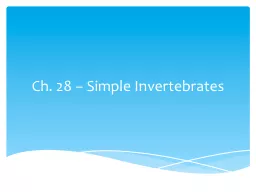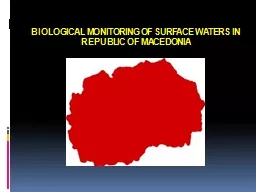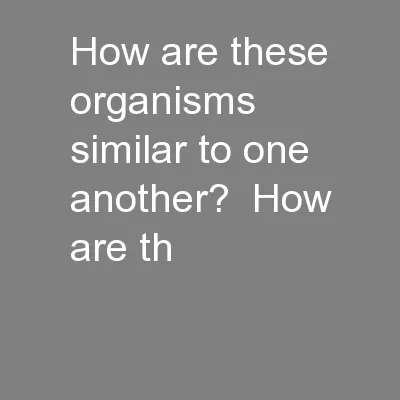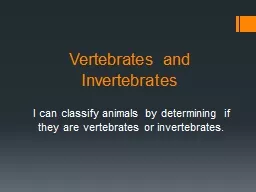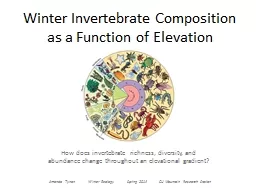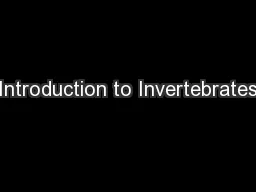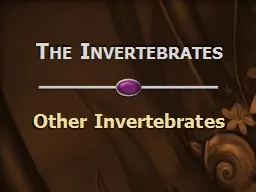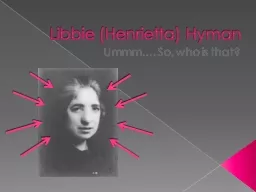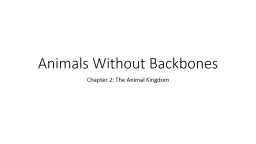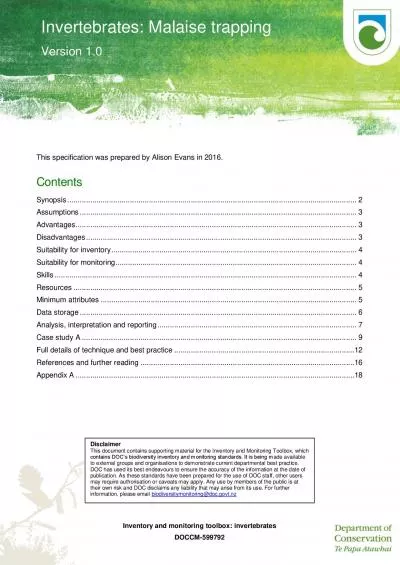PPT-Ch. 28 – Simple Invertebrates
Author : unisoftsm | Published Date : 2020-06-16
Section 281 Sponges Sponges were once classified as plants Asymmetrical Lack tissues and organs Cell recognition makes them animals The Simplest Animals Sponges
Presentation Embed Code
Download Presentation
Download Presentation The PPT/PDF document "Ch. 28 – Simple Invertebrates" is the property of its rightful owner. Permission is granted to download and print the materials on this website for personal, non-commercial use only, and to display it on your personal computer provided you do not modify the materials and that you retain all copyright notices contained in the materials. By downloading content from our website, you accept the terms of this agreement.
Ch. 28 – Simple Invertebrates: Transcript
Download Rules Of Document
"Ch. 28 – Simple Invertebrates"The content belongs to its owner. You may download and print it for personal use, without modification, and keep all copyright notices. By downloading, you agree to these terms.
Related Documents

